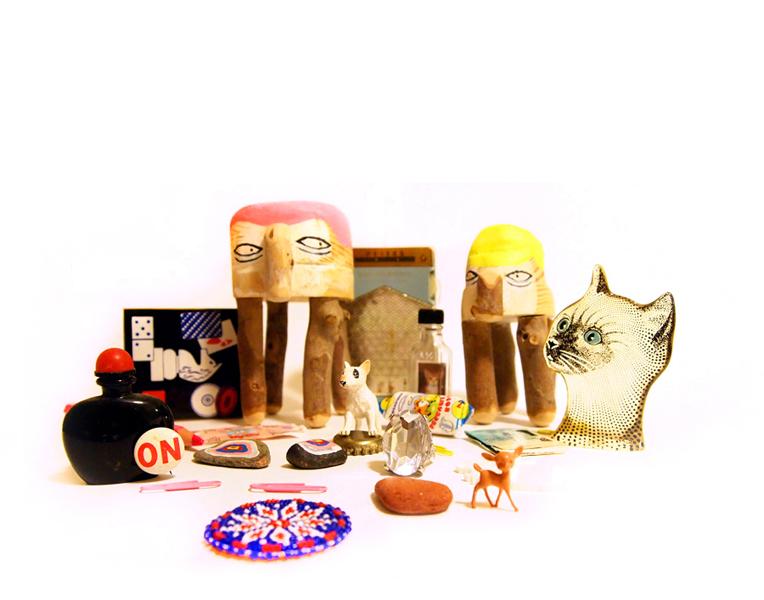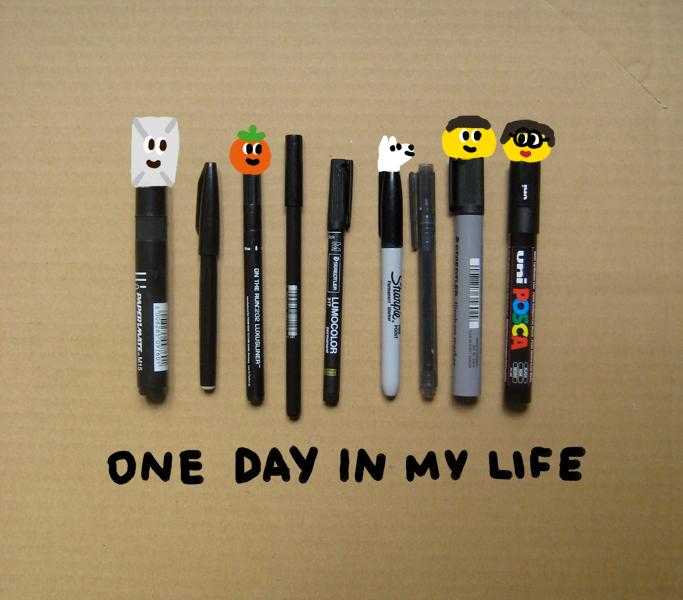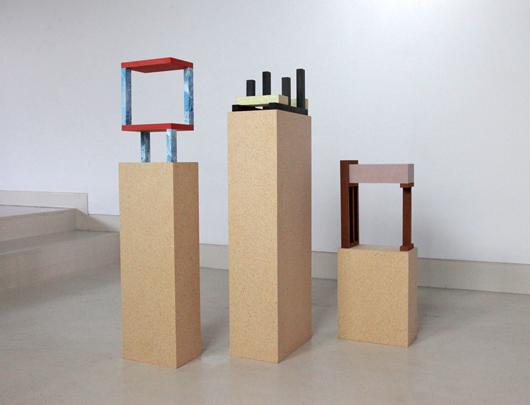
07.30.12
Up and Coming
Kent Fonn Skåre, Artist and Graphic Designer
Being that he’s still a student at Konstfack in Stockholm, you’ve probably never heard of Norwegian artist and graphic designer Kent Fonn Skåre. But his work, even at first glance, is ridiculously easy to love: It’s got a heavy focus on materials, lots of marble, and a whiff of Memphis — yes, the three “M”s, the golden trifecta of the current avant-garde, or at least the little corner of it that we’re obsessed with, which also includes folks like Clemence Seilles and Jens Praet. We discovered Fonn Skåre via a fleeting image on Pinterest, but found surprisingly little information on him and the ideas behind his work, so we did what we do best, harassing the poor man until we were able to tease out a bit of insight into his practice. Check out the interview and accompanying photos here, then bookmark Fonn Skåre’s Flickr feed to browse more of his graphic design work and follow his future projects.
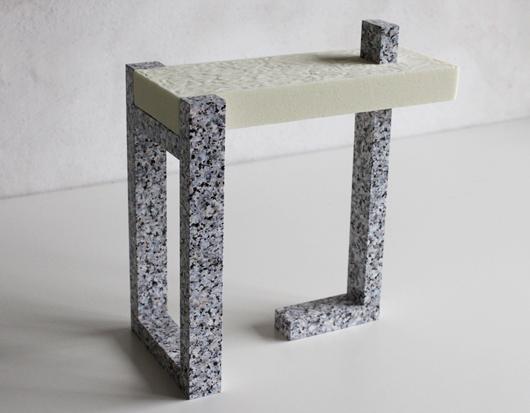
1. Describe your most recent project, and how it was made:
“I recently had an exhibition in Sydney where I showed a series of nine small sculptures and one photography-based sculpture. The starting point for the series was schematics and construction drawings of walls, floors, and roofs, the purpose of which is to show the different materials used and their placements in relation to one another during the building process. The drawings had a cartoony and funny character, even though they were describing something very concrete and boring. When reconstructing parts from these drawings into a three-dimensional form, the result is an ‘in-between object,’ a morphing of the real construction the drawings depicts with the drawing itself. While working, I lost interest in strictly following the schematics like a recipe and started to work more abstractly with the structures, while still keeping the drawings in the back of my mind. The process became more intuitive and playful. This is a way of working that I find more rewarding than merely carrying through thought-out plans; it leaves room for making discoveries and developing my work. All the materials used in the sculptures are fake materials that represent something else (plastic that replicates stone, MDF you could say mimics wood). Cibatool is a material made specifically to produce prototypes (representations of the finished product). This aspect connected the materials used in the sculptures back to the original drawings.”
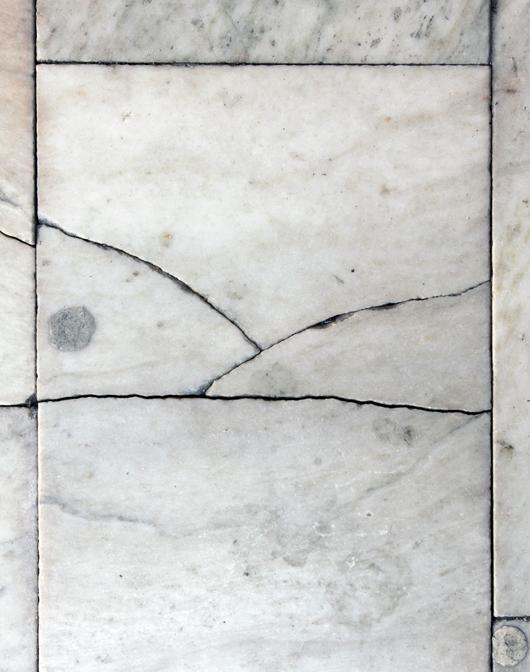
2. Describe your next project, and how you’re currently making it:
“I’m currently working on a still-frame film project, under the working tittle Soft Landscape. The still frame depicts a-soon-to-be-replaced broken marble tile (above) found in the city centre of Stockholm. Due to usage and wear, the tile has cracked into lines that draw a classical scenic landscape – water, mountains, and sky. In relation to the theory of psychogeography, Guy Debord discussed the combination of two different types of ambience that determined the value of the urban landscape: the soft ambience (light, sound, time, the association of ideas) and the hard (the actual physical constructions). The cracks in the tile show these ‘soft ambiences’ manifested in the hard. By presenting the observation as a still frame film instead of a photograph, the work includes the passing of time and in this way refers back to how the cracking and composition was made. I must add that this image is a sketch, since it’s a work in progress, and the final version has yet to be filmed. In addition to this, I’m working towards the next ReVision exhibition, and in September I’m designing a catalog for Tag Team Studio, an art gallery located in Bergen, Norway.”
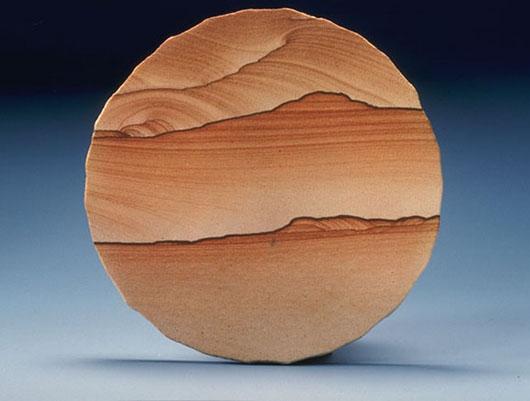
3. Tell us something that’s been inspiring you lately, and why:
“Coming from Scandinavia with its sober architecture traditions, I’m finding the architecture in Sydney interesting. The city center is retro-futuristic, with skyscrapers and buildings that look like cruise ships and spacecrafts. It also has a monorail floating between the buildings and over the pedestrians – how cool is that? This being said, I found the city hard to like due to the lack of effective public transportation and the enormous amount of cars. I love materials, and during my trip I discovered that Australia has a lot of very beautiful sandstone (above). Also, a year ago I was really into Ettore Sottsass and Memphis furniture, something that can be seen in my most recent work. Another artist’s work I recently stumbled on and find interesting is Kjell Varvin, and I’m also influenced by my girlfriend Magnhild Øen Nordahl‘s work (hei, Magnhild!). In regards to graphic design, I find Metahaven‘s political approach very refreshing, and I also find Brad Troemel’s writing funny and interesting. Taking a walk at construction sites or in urban landscapes is also something I like. The observations I make at these sites often end up being the starting point of a project.”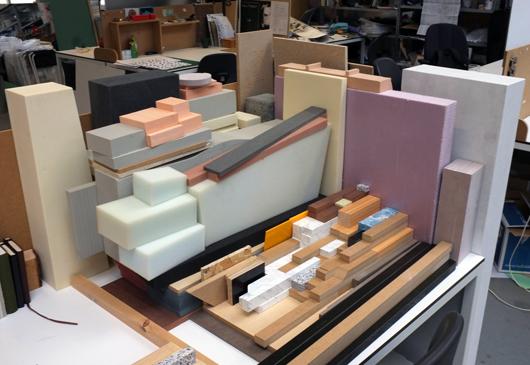
4. Show us your studio, and tell us what you like about it:
“I’m still in school, so my desk in the classroom is my studio. This picture was taken while I was working with the Semi-Schematics sculptures, where I spent most of my time in the wood workshop; my desk functioned more as a storage space for all my materials. The photo is taken by my good friend Christian Skovgaard. Hei Christian!”
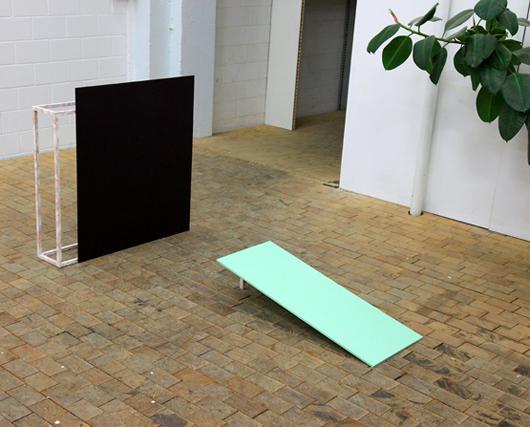
Fonn Skåre’s Institut Fur Normung III, 2011
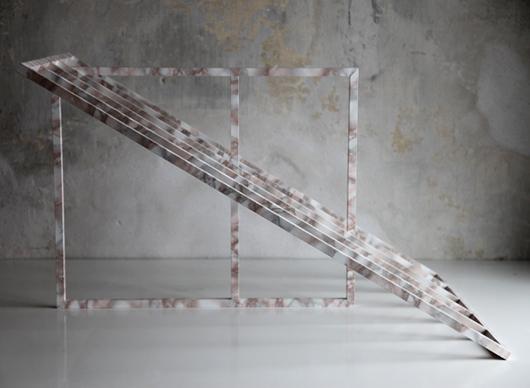
Fonn Skåre’s Static Structure II, 2011
